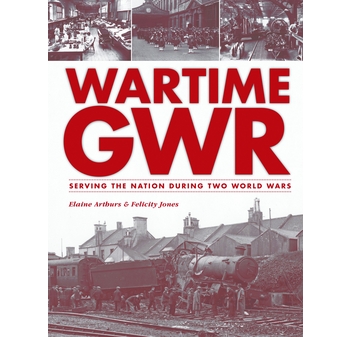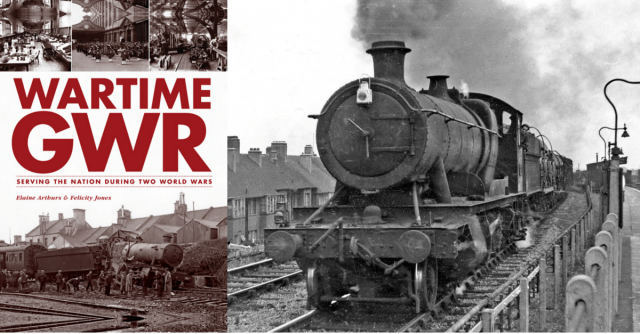The railway regions of the pre-grouping British Rail still proclaim their achievements long after they ceased to officially exist and good for them I say. Or rather, good for the enthusiasts and historians who keep their memory alive. Of course the GWR was always keen on telling the world how good it was! My Great Grandfather, Grandfather and Father, being Midland, LMS and BR Midland Region men might have bridled at ‘God’s Wonderful Railway’ boasting but I don’t mind. I’m a Great War historian who likes all regions and all steam engines. Railways were the arteries that kept the war effort moving; they were vital. This is a pictorial book produced in Ian Allen’s well known style; glossy black and white photographs with short captions. The focus is on the GWR in both the Great War and Second World War.
These are evocative photographs of GWR life and the people who worked for the company in both wars; old, young, male and female and occupied in all manner of trades and war work. There are photographs of weapons, ordnance and vehicles, all constructed or modified by the company, as well as photographs of tank, landing craft, midget submarine and LMS 8F construction by the GWR. There are excellent ambulance train photographs and two interesting pictures of the cross channel ferry used for transporting, among other things, railway vehicles during the Great War. The Second Wolrd War bomb damage photographs, taken on government orders, but not for publication, are fascinating.Inevitably there are plenty of locomotive photographs depicting the engines in war and public service. The ubiquitous Dean Goods and Hall class mix with World War Two photos of American S160 class 2-8-0s and the 0-6-0 T shunters.
However, I have four ‘gripes’ and they are about captions, not photographs. Throughout the Great War ambulance train vehicles were modified and constructed all over the regional railways but there were not 800 trains as stated on p.57.There were 822 vehiclesin service by the end of the Great War and apart from the trains working in Britain there were 49 ambulance trains operating overseas(E. A. Pratt, British Railways and the Great War, Vol I, Selwyn & Blount Ltd, 1921).The officers standing at the back of the Engineer Officer group on p.33 are second lieutenants, not lieutenants; there is a difference! Hurricane pilots did not ‘eject’, p. 128 – 9, they bailed out by either dropping or climbing out of the cockpit and the tanks on p.126 are Grant and Matildatanks. Nonetheless, despite these minor editorial failures the quality of the book is undiminished.
The images come from the picture archive at STEAM – Museum of the Great Western, Swindon, where compilers Elaine Arthurs and Felicity Jones are Assistant Curators. As the introduction points out there are few Great War images at the museum but in contrast there are almost 2,000 Second World War photos available in the archive.I would add that the reason for the lack of Great War photos was because the Ministry of Munitions took a dim view of railway photography during the Great War. However, Arthurs and Jones have struck a fine balance of images. Some of the photographs in the book have been seen before but others are published for the first time and most are of excellent quality. Some would have been taken by professionals and as was the case during both wars,some must have been taken in official photo-shoots, initiated and directed by the government. This book is one for the railway fans, one for modellers and for those who are interested in the railways during wartime.A great addition to the railway/military history bookshelf.
Reviewed by Dr Wayne Osborne for War History Online.

WARTIME GWR
Serving The Nation During Two World Wars
By Elaine Arthurs & Felicity Jones.
Ian Allan, 2014.
Hardback, 160 pages.
ISBN 978 0 7110 3805 9

